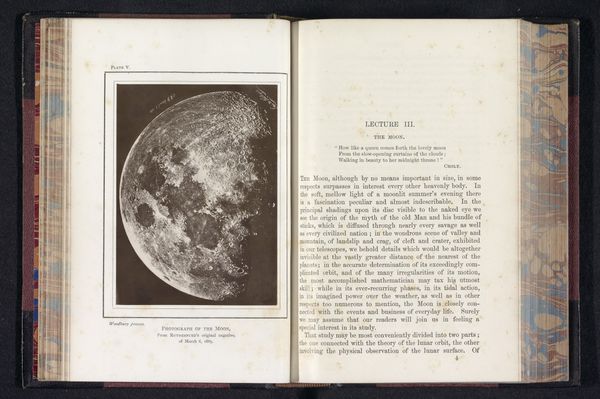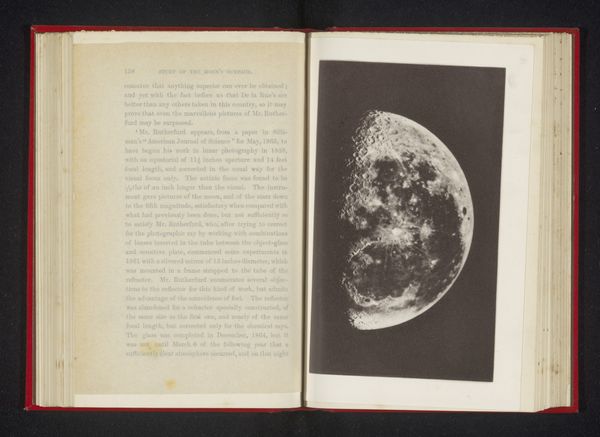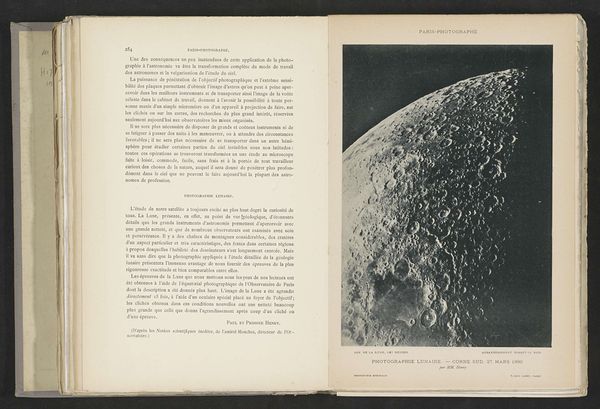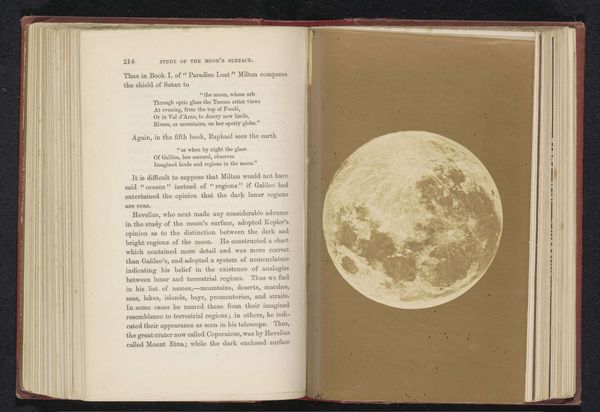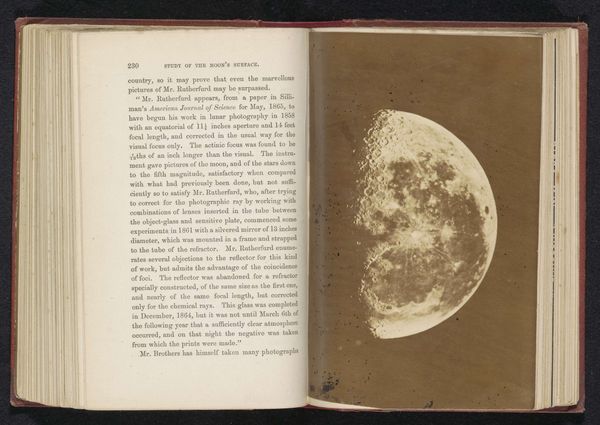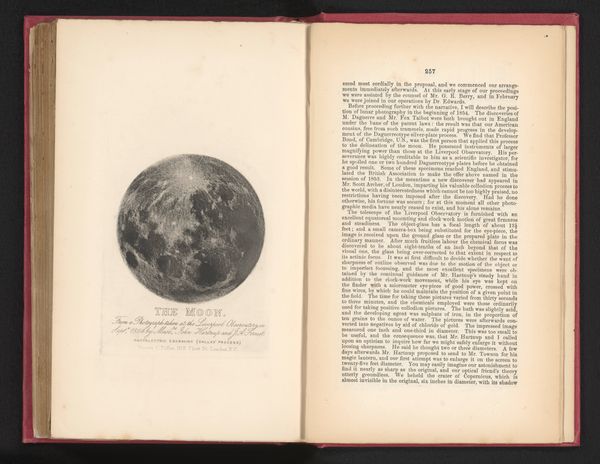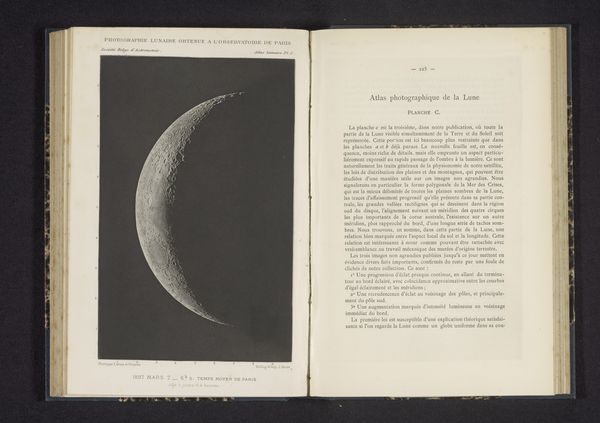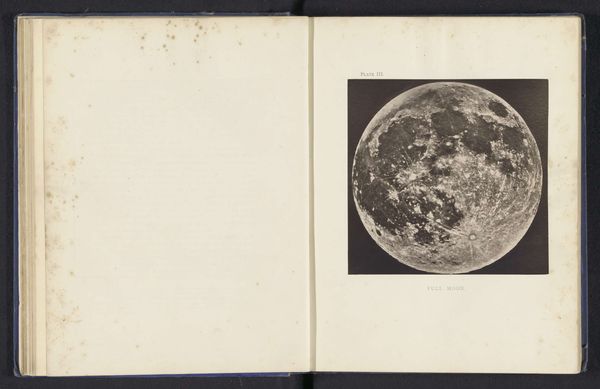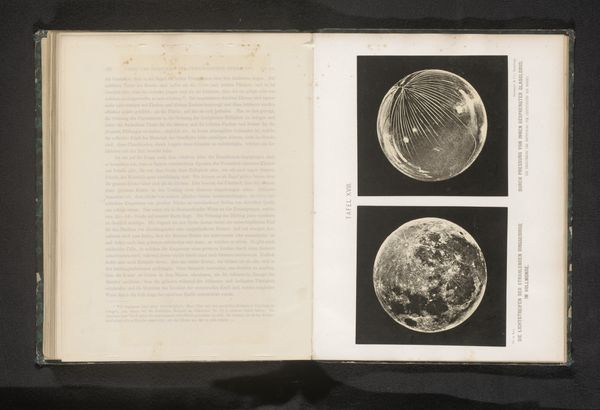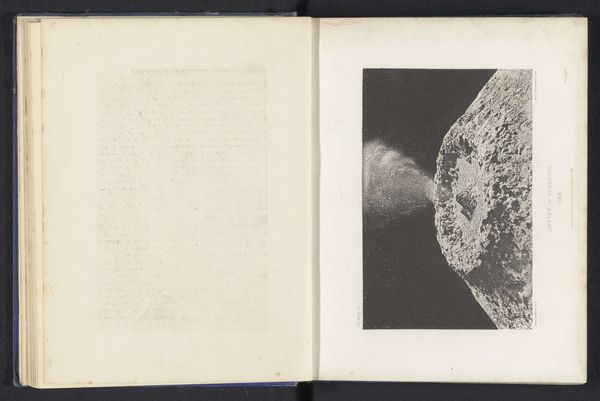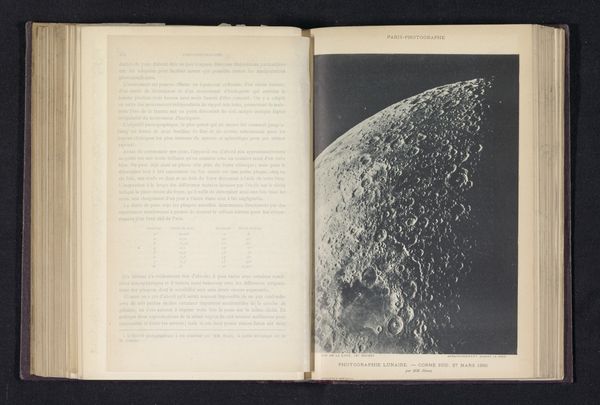
print, photography, gelatin-silver-print
#
still-life-photography
# print
#
photography
#
coloured pencil
#
gelatin-silver-print
#
modernism
Dimensions: height 145 mm, width 97 mm
Copyright: Rijks Museum: Open Domain
This photograph of the moon’s first quarter was produced by Lewis M. Rutherford. It's a testament to the late 19th century’s burgeoning scientific inquiry. Notice the craters and shadows, achieved through a reflecting telescope. As photography advanced, it served not only as a tool for documentation but also for exploration. The text on the opposing page talks about this application of photography and the process through which it was made, giving insight into the labor that went into it. This image sits within the complex history of science and technology in the 19th century, when new institutions like the Lick Observatory were being founded, and advancements in photography and telescope design allowed people to look at the moon like never before. To fully appreciate this image, it helps to delve into the scientific literature of the period, as well as institutional records and personal correspondence. These sources reveal how technological innovations are rooted in social contexts.
Comments
No comments
Be the first to comment and join the conversation on the ultimate creative platform.

